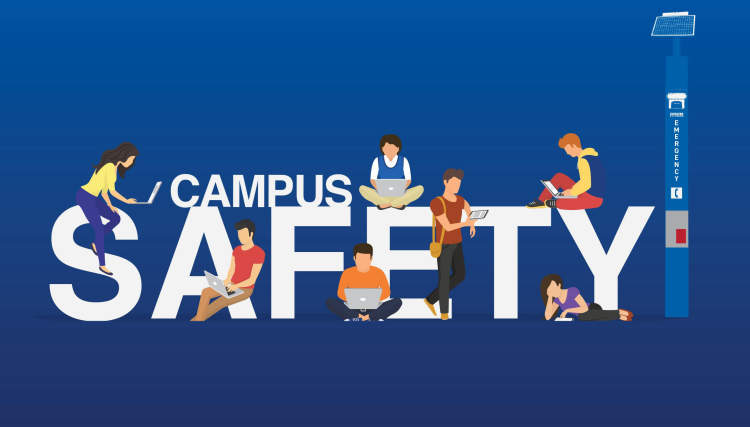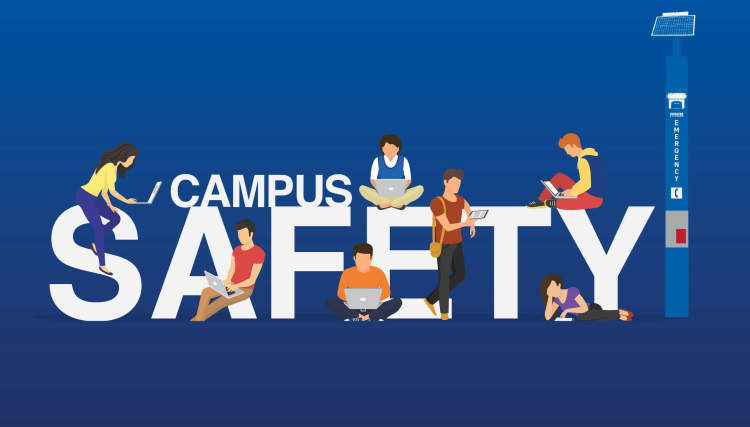Campus safety is a key issue for colleges and universities in the US, and it is their responsibility to ensure that their campuses remain secure and free from threats. There are a variety of measures that can be taken to ensure the safety of students, staff, and visitors on campus, including physical security, technologically advanced security systems, and a strong emergency response plan.
This article will discuss the various ways to ensure campus safety and security in the US, such as the use of safety protocols, the implementation of effective security systems, and the development of responsive emergency protocols and procedures. It will also offer advice for educational institutions on best practices for preventing and responding to potential threats and emergencies.
Understanding the Risk of Crime and Security Issues at US Campuses
With college campuses situated across the United States, it’s no surprise that many of them face a significant risk of criminal activity and security issues. From vandalism to sexual assault, there are numerous cases of criminal offenses that occur on college campuses annually. As a result, many college campuses have adopted various measures in order to ensure that their campus remains safe and secure.
In order to properly understand the risks associated with crime and security issues at US campuses, it’s important to consider the following aspects:
- The rate of criminal incidents on college campuses. The Department of Justice has reported that more than half of all college campuses in the United States experience serious crime each year, with an estimated 2.4 million instances of violent crimes reported annually.
- The amount of security present on US campuses. According to the National Center for Education Statistics, nearly all public four-year colleges and universities across the country employ security personnel, with most of them also possessing video surveillance systems and access control measures.
- The attitudes of the student body toward campus safety. Recent surveys conducted by the National Center for Education Statistics reveal that 78 percent of students believe that campus safety is a priority.
Thus, it is clear that US college campuses face a significant risk of crime and security issues. In order to ensure campus safety and security, college campuses must take appropriate measures such as hiring adequate personnel, implementing security systems, and fostering a positive campus culture.
Promoting Safety Through Strong Campus Security Measures

School campuses are where most young adults spend the majority of their time, and it is a responsibility of the school to ensure the safety and security of each student. To guarantee a secure environment, industrial grade safety measures should be in place. The following are several safety and security measures that can be adopted to promote the safety of those in campus environments.
Evacuation Protocols
In the event of an emergency or dangerous situation, an institution must have an established evacuation protocol. All faculty, staff, and students should be aware of the protocol and are expected to adhere to it in any emergency situation.
Surveillance
Adopting a standard of surveillance will help ensure the safety of those on campus. Both video and audio recordings are essential for monitoring suspicious activities in an environment. Installing cameras and having audio detections can detect potential threats and help to prevent them before they occur. Additionally, having a reliable security guard/team in the area can be beneficial for direct action.
Technology Solutions
Using technology to improve safety and security measures can be extremely efficient and cost-effective. Electronic door locks, intrusion alarms, and access control systems can minimize the risk of unauthorized entry. Automated verification systems can also be implemented for accurate record keeping of entrances onto school grounds.
Emergency Notification Systems
Having a comprehensive emergency notification system is essential for sending out emergency alerts in the event of a crisis or dangerous situation. Alert systems can be easily activated via text message, email, or other forms of media to allow those in the campus to be made immediately aware of the situation.
Security Training Programs
Providing security training for staff, faculty, and students is a key factor in promoting safety on campus grounds. Training should include general security instructions and protocols, as well as specific guidelines and procedures for responding to a wide array of emergency situations.
Promoting safety through strong campus security measures is essential in providing a safe and secure learning environment for students. By utilizing an efficient combination of detection technologies, training programs, and emergency notification systems, institutions can ensure the safety of those on its campus grounds.
Establishing Policies and Practices to Prevent and Reduce Campus Crime
For college campuses to be safe for all members of the campus community, universities must take proactive steps to ensure safety and security on campus. Establishing strong policies and practices will help to reduce and prevent campus crime and encourage a secure and safe campus environment. The following are some effective strategies that universities should consider implementing to help prevent and reduce campus crime.
Clear Code of Conduct and Consequences
It is important for universities to communicate clear policies and expectations for student conduct outlined in a code of conduct. These policies should be adequately published and available for all students and staff to access. Additionally, the consequences of any violations of the student code of conduct should clearly be articulated so that there are no surprises if the code is violated. This will help to ensure that all members of the campus community understand what is expected and establish a shared set of expectations.
Promote Community Engagement
An effective way to reduce and prevent campus crime is to promote community engagement and a strong sense of stewardship of campus property. Universities can do this by hosting various events throughout the year that promote campus community building, inclusion, and safety. Additionally, universities can establish student-led initiatives like neighborhood watches or campus patrols to help ensure safety and security on campus.
Surveillance Cameras
Having surveillance cameras covering all parts of the campuses, inside and out, can help to reduce and prevent campus crime. With cameras in place, night security guards can monitor the campus and alert the appropriate authorities if there is suspicious activity. Surveillance cameras should be well-maintained to ensure that they are functioning properly.
Security Protocols
To ensure safety and security on campus, universities should implement security protocols such as access control, electronic identification and door locks, to name a few. These protocols should be regularly reviewed and updated as needed to maintain a secure campus environment.
Safety Awareness Programs
Universities should launch safety awareness programs for all members of the campus community to help identify potential risks and threats, and provide advice on how to stay safe on campus. These programs should be tailored to the particular needs of the campus community and can be conducted through seminars, online education courses, or other initiatives.
Counseling Services
Universities should provide counseling services for students who have experienced or are at risk of experiencing violence or crime on campus. These services should be accessible and offered in a safe and confidential environment. Additionally, universities should train faculty and staff on how to identify and respond to signs of distress among students.
Conclusion
Ensuring campus safety and security in the US is an important issue that must be addressed. The US Department of Education (DoE) has outlined measures for colleges and universities that must be taken in order to ensure campus safety. Such measures include conducting regular campus safety assessments, employing more security personnel, establishing anonymous reporting systems, implementing new surveillance systems, and increasing education and awareness of issues related to campus safety. By taking these steps, higher education institutions can create safer learning environments for all students and staff.
However, it is important to remember that creating campus safety is a collective effort between college administrators, students, staff, and community stakeholders. To ensure campus safety, all stakeholders must be involved in the discussion of the best strategies and solutions to ensure everyone in the campus can feel safe and secure. Only then will higher education institutions be able to create an environment of safety and security for all.




